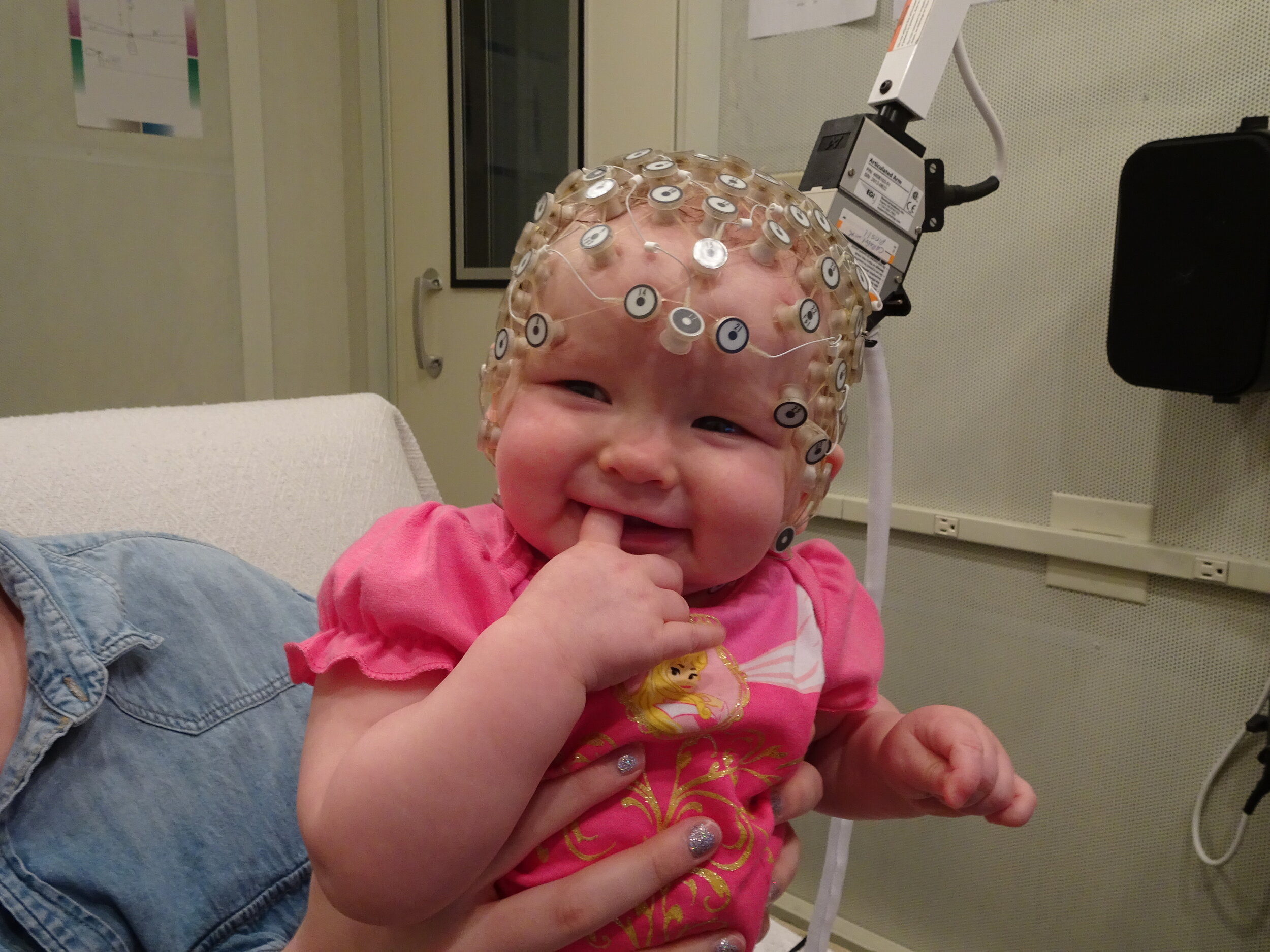About Our Research
Our basic research seeks to uncover the early neural mechanisms necessary for cognitive and language development in typically developing and at-risk populations including children born into families with a history of language disorders or autism.
Specifically, we study development of temporally-bounded sensory information processing (shown to be a major predictor of language impairment and dyslexia in older children), the neural substrates that support the developing abilities and the relations seen with emerging language and cognitive abilities from infancy through early childhood.
All studies are prospective and longitudinal and are conducted on children from 4 to 18 months of age.
What is this funny-looking net?
We get a lot of questions from prospective participants about our EEG (electroencephalography) nets. Namely, parents wonder whether the nets are comfortable, and most importantly whether they are safe.
The answer is— yes! Our nets are made especially for babies' heads. We have multiple caps of all different sizes for different ages. At your visit we measure your baby's head to find out which cap is the best fit. Each electrode on the cap has a tiny sponge on the underside. When soaked in our solution of saline and baby shampoo, the sponges become soft and squishy— and feel soft on your baby's head. Babies may startle at first due to the wetness of the cap, but typically calm down within a minute or two of application. Our entertainers are skilled at distracting them with various toys.
As for safety: our nets are to your baby's brain as a stethoscope is the heart. We use the nets to pick up the brain's electric signals, just as a stethoscope picks up the rhythm of a heart. Everything we do in the lab is non-invasive and child-friendly. We have over 20 years of practice and we pride ourselves on seamless net applications and our baby-friendly atmosphere. Your comfort is key!






